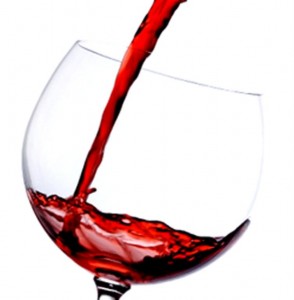-
Enjoying the Heart Benefits of Red Wine
Saturday, December 28th, 2024by Dr. Janet Brill, Registered Dietitian
Have you ever noticed how people in France routinely partake of artery-clogging cream sauces, butter and other fatty, cholesterol-laden foods like foie gras – yet have only half the rate of heart disease that Americans do?
The key to this mystery, which researchers dubbed the “French Paradox” in the early 1990’s, is thought to be the liberal amounts of red wine French people drink together with their high fat meals.
 In fact, having a glass or two of red wine each day with your meal is vital to maintaining a healthy heart. The beneficial effects against atherosclerosis of light-to-moderate wine drinking have been attributed to two key ingredients present in red wine: the alcohol (ethanol) content, along with the antioxidant activity of its polyphenols.
In fact, having a glass or two of red wine each day with your meal is vital to maintaining a healthy heart. The beneficial effects against atherosclerosis of light-to-moderate wine drinking have been attributed to two key ingredients present in red wine: the alcohol (ethanol) content, along with the antioxidant activity of its polyphenols.Research studies show that individuals who drink red wine in moderation (which is defined as one 5-ounce glass for women or two 5-ounce glasses for men) are less likely to suffer a deadly heart attack.
Red wine is one of the eight key food groups – along with leafy greens, extra virgin olive oil, lentils and other legumes, figs and other fruits, salmon and other seafood, walnuts and flaxseeds, and oatmeal and other whole grains – that are part of an eating plan I created to reverse heart disease, or build good heart health to hopefully avoid heart problems.
Dark chocolate is a “bonus” food in this plan. Yippee! The entire program is detailed in Prevent a Second Heart Attack: 8 Foods, 8 Weeks to Reverse Heart Disease (www.PreventaSecondHeartAttack.com).
Because of its collection of powerful antioxidant polyphenols, red wine distinguishes itself from all other types of alcoholic beverages for its ability to neutralize heart attack risk. But in order to take advantage of wine’s huge load of powerful polyphenols, be sure to choose red instead of white.
The polyphenol content of red wine is 10 times larger than that of white wine. This is because the polyphenols in red wine are produced by fermentation of grape juice in the presence of the pulp (skins and seeds). White wine, on the other hand, is made by quickly pressing the juice away from the grape solids, making white wine essentially fermented fruit juice.
Three specific types of polyphenols stand out in the red wine crowd for their notable cardio-protective benefits: procyanidins, quercetin and resveratrol. One antioxidant in particular, resveratrol, has received the bulk of the media’ attention.
It’s important to understand that resveratrol is found only in the skin of the grape. Therefore, because red wine is made by fermenting the juice of the fruit with the pulp (both skin and seeds) and white wine is made through fermentation of the juice alone, red wine contains resveratrol whereas white wine has only a negligible amount.
What Drinking Red Wine Can Do for You
Daily consumption of red wine can boost your heart disease “defense system” by:
- Increasing your body’s antioxidant levels.
- Boosting your “good” HDL levels.
- Expanding the size of your HDL particles. (When it comes to HDL cholesterol, not only is it better to have more, but you also want to have a high number of the larger, fuller version of HDL particles present in your bloodstream. This is the form of HDL particle that is better at preventing heart disease than the smaller version.)
- Immunizing “bad” LDL cholesterol against an attack of free radicals.
- Improving your blood sugar levels
- Decreasing inflammation.
- Lowering your blood pressure by relaxing your arteries and calming your nerves.
- Last but not least, thinning your blood.
One additional benefit of enjoying a glass of red wine with dinner is that it helps you to slow down, relax and truly savor your meal. There may be no greater pleasure than sitting down to a leisurely dinner of fresh and delicious whole food, skillfully prepared, tempered with a flavorful glass of Cabernet Sauvignon, and shared with family and friends.
One caveat: Drinking alcohol is clearly a double-edged sword. One thing is certain: moderation is the magic word, meaning a little alcohol is good, but a lot is not better. Yes, wine is beneficial for your health – but only in moderation.
A daily glass of your favorite red wine to accompany your olive oil–infused Mediterranean-style dinner can add years to your life and, just as importantly, add life to your years!
IMPORTANT WARNINGS:
- For women at risk of breast cancer, any amount of alcohol increases that risk.
- For pregnant women, there is no safe level of alcohol consumption.
- Alcohol can interact badly with prescription medications.
- Avoid drinking alcohol if you have been diagnosed with cardiomyopathy or cardiac arrhythmias.
(published March 31, 2012)
 Janet Brill, Ph.D., R.D., LDN, is a leading diet, nutrition, and fitness expert specializing in cardiovascular disease prevention. She is the author of Cholesterol Down: 10 Simple Steps to Lower Your Cholesterol in 4 Weeks – Without Prescription Drugs (Three Rivers Press, 2006), and Prevent a Second Heart Attack: 8 foods, 8 Weeks to Reverse Heart Disease (Three Rivers Press, Feb. 2011). To learn more about Dr. Janet, get delicious heart-healthy recipes, or buy her books, please visit DrJanet.com or PreventaSecondHeartAttack.com.
Janet Brill, Ph.D., R.D., LDN, is a leading diet, nutrition, and fitness expert specializing in cardiovascular disease prevention. She is the author of Cholesterol Down: 10 Simple Steps to Lower Your Cholesterol in 4 Weeks – Without Prescription Drugs (Three Rivers Press, 2006), and Prevent a Second Heart Attack: 8 foods, 8 Weeks to Reverse Heart Disease (Three Rivers Press, Feb. 2011). To learn more about Dr. Janet, get delicious heart-healthy recipes, or buy her books, please visit DrJanet.com or PreventaSecondHeartAttack.com.


